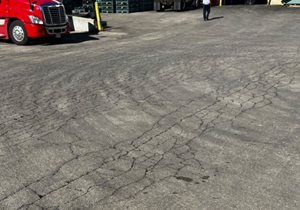
Last week I was in Rockford, Illinois to pick up a shipment. As it turned out, I arrived nearly a day early from my scheduled appointment. The good news was that this location sometimes loads me in the earlier hours of the day, rather than having to wait for my appointment time in the evening. This facility has a nice place to park. I was able to park the truck facing East and aimed my Merlin Solar Panels towards where the sunlight would be directly on them in the morning. This way, I would be able to brew my coffee and make my breakfast without needing to idle the engine of our Cascadia.
When I got up in the morning, I turned my coffee pot on and heated my breakfast in the microwave. After breakfast, I walked into the shipping office. They let me know that my load would be ready around lunchtime, which was much earlier than the scheduled appointment. I went back to my truck to relax in the driver’s lounge of the Cascadia and observed trucks as they came and went from the loading docks.
One thing that stood out to me as I watched the trucks coming in and out of the yard, was that so many people pulled, turned their trucks as sharply as they could, and pivoted their trailers around. The tires on the trailers weren’t even turning, due to the severity of the turning radius employed in their maneuvers. What’s interesting in this particular location, is that it’s very easy to make a left turn when approaching the docks, pull straight down the available driveway, back up, and then make another gentle turn out to be lined up with the docks.
My mind thought about all that unnecessary wear on the trailer tires, the trailer suspension, the chassis of the trailer, the wheel bearings, and the truck chassis and other components, as these trailers were quite literally being dragged sidewards. Each time a tire is dragged sidewards, it’s pulling rubber right off the face of the tread. Obviously, there’s always going to be a certain amount of tire scrub encountered when turning a tandem axle truck or trailer. The point here is that we can minimize the amount that a tire is being scrubbed or dragged sidewards. This is especially true when a trailer is completely pivoted around, in which case the tires are not rotating at all, therefore putting a flat spot in the tire. That flat spot will later reveal itself as irregular wear.
While having time to sit and think as I waited for my shipment to be ready, I thought of all the little things that could be done to increase the profitability of a trucking operation. Little things, like not racing up to a traffic light or stop sign. This not only wastes fuel, but wears out brakes quicker along with wearing the tires quicker. Stopping for a break in a valley vs. on a hill, or level ground, increases fuel consumption due to the energy required to resume road speed down the highway from a valley. The ultimate place to take a break is at the top of a hill, where hardly any of the truck’s foundation brakes are needed to slow the truck, along with reduced energy needed to get back up to highway speed, since the exit is downhill. These are only a few small actions, but there are numerous actions like these that all add up to a more profitable trucking operation.